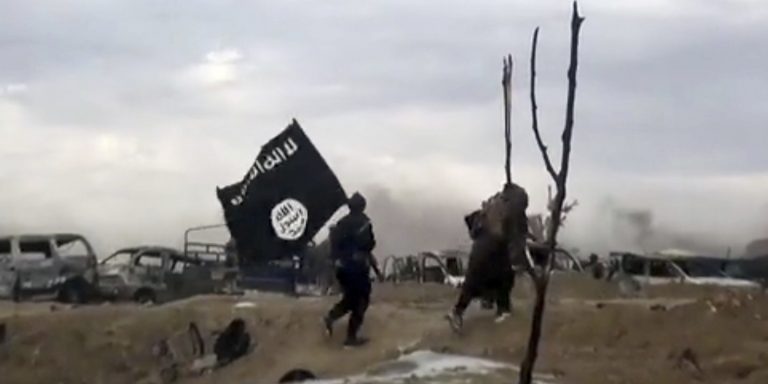INTELBRIEF
August 12, 2019
IntelBrief: Don’t Call It A Comeback: The Staying Power of the Islamic State

- Several high-level reports published over the past few weeks reiterate what most terrorism and security analysts have been saying for months—the so-called Islamic State (IS) is alive and well in Iraq and Syria.
- Over the past several months, IS has waged a campaign of assassinations, ambushes, and suicide attacks.
- IS boasts between 14,000 and 18,000 current members and has amassed a war chest assessed at between $50 and $300 million.
- Not only is the physical manifestation of IS resurging, but the deplorable conditions are abetting the group’s ability to sustain itself in the future in places like al-Hol, which fuels propaganda and recruitment.
.
.Several high-level reports published over the past few weeks reiterate what most terrorism and security analysts have been saying for months—the so-called Islamic State (IS) is alive and well in Iraq and Syria. The Lead Inspector General (IG) report to Congress on the state of Operation Inherent Resolve, combined with the United Nations Security Council report on the Islamic State, paint a bleak picture of the campaign to defeat the group in Iraq and Syria. The IG report describes how IS has reconstituted a sophisticated command-and-control network while the UN report warns explicitly of the potential for a new wave of terrorist attacks around the globe by the end of the year.
The IG report, which covers the period from the beginning of April to the end of June, notes that even though IS has lost its physical caliphate, the group has still managed to reinforce its operational and organizational capabilities, while transforming into an underground guerrilla movement in Iraq and Syria. IS has been able to resurge, in large part, because U.S. partner forces, including the Iraqi Security Forces (ISF) and the Syrian Democratic Forces (SDF), lack the training and equipment needed to combat the group. The IG report estimates that IS boasts between 14,000 and 18,000 members currently. Its vast financial reserves, assessed at between $50 and $300 million, provide it with the opportunity to reinforce franchise groups across the globe. In 2017, IS core in Iraq and Syria sent funds to militants fighting in Marawi in the Philippines. It will likely seek to do the same with its affiliates in Egypt’s Sinai Peninsula, Libya, Afghanistan, West Africa, and elsewhere. The U.S. military has warned that the Islamic State Khorasan Province (ISKP), IS’s affiliate in Afghanistan, is capable of inspiring and directing attacks against Western countries, to include the United States.
Over the past several months, IS has waged a campaign of assassinations, ambushes, kidnappings, and suicide attacks. Massive crop fires, which have been attributed to the group, serve as a reminder to the population that the governments in Iraq and Syria are unable to protect civilians while undermining confidence in local security forces. As chaos and instability return to areas where IS formerly governed, reconstruction and stabilization efforts will be further delayed and postponed, perhaps indefinitely. Despite President Trump's announcement in December 2018 that 'We have won against ISIS,' it is clear that the Islamic State has the ability to sustain an insurgency for the foreseeable future. This is not an issue of IS returning to Iraq and Syria—the group and its members never left.
Not only is the physical manifestation of IS resurging, but the terrible conditions are abetting the group's ability to sustain itself in the future in places like al-Hol, a detention center in Syria where as many as 70,000 people are being held, most of whom are children. The UN report warns of the impact of prison radicalization and the deplorable conditions of detention camps like al-Hol, where IS is actively working to recruit new members within the camp’s large population of internally displaced persons. Without a coordinated strategy to deal with the individuals held in these camps, the cycle of violence is likely to repeat itself, thereby perpetuating extremism not just in Iraq and Syria, but in third-party nations where foreign fighters and their families ultimately seek to resettle.
.
For tailored research and analysis, please contact: info@thesoufancenter.org